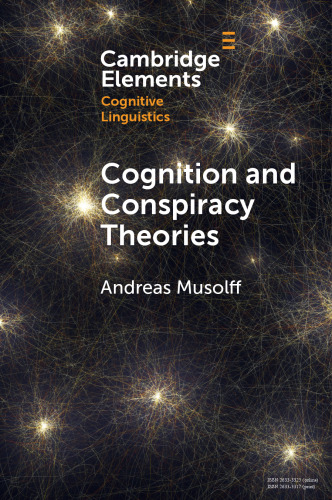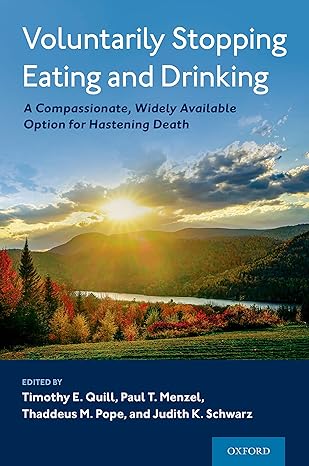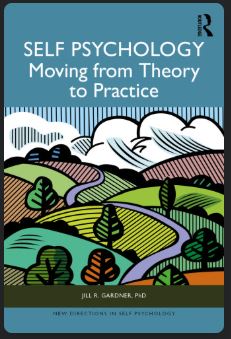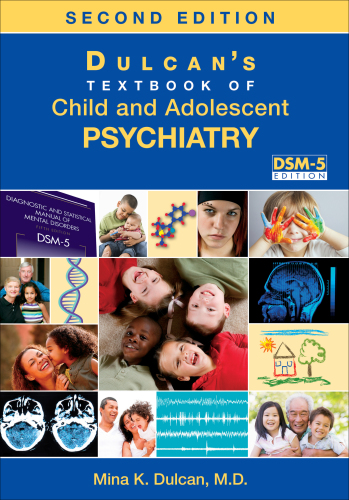Introduction This book brings together two areas of psychotherapy that should converge neatly – but usually do not. The first is the practice of constructive thera- pies, my umbrella term for the brief, collaborative and competency-based approaches that are increasingly popular among helping professionals. For many, including myself, the appeal of these approaches lies partly in their refreshingly positive, optimistic and frankly challenging philosophy, and partly in the possibilities they offer for brief but effective work. The best known and most influential models within this general orientation are probably solution-focused therapy and narrative therapy. The second area is the practice of family therapy, involving the fascinating dilemmas of working with relationships. For many helping professionals in the fields of counselling, social work, psychology, education and health, family- based work is a major occupation and challenge. Many practitioners have an interest in constructive therapies. Many practitioners have an interest in working with families. This book is written for those who have an interest in both. Constructive therapies would seem to be an appealing choice for work- ing with families. However, though there is an abundant literature on con- structive therapies and an abundant literature on family therapy, there is a surprising dearth of work that specifically links the two and provides a framework for constructive family therapy. My experience of trying to fill in the gaps and make the connections – for myself as much as for my students – produced the impetus for this book. I have tried to write the kind of book that I wish had been available when I most needed it. How is it that these two areas of psychotherapy have not converged as smoothly as they might? Perhaps one factor is that though, historically, many of the ideas in constructive therapies had their origins in the field of systemic family therapy, the two groups have tended to diverge in recent years and to talk in different languages. The relationship between con- structive therapists and family therapists remains distinctly ambivalent, with the two groups tending to develop their own networks, conferences, training programmes and publishing outlets. In constructive therapy circles, family therapy is likely to be viewed simply as one particular context for practice. Other practice contexts would include individual therapy, couple therapy, groupwork, organizational consulting, counselling supervision, etc. Introduction.qxd 3/11/04 8:35 AM Page 1 This means that training in constructive therapy typically emphasizes generic processes and skills which it is assumed can be generalized across all practice contexts. Less attention is paid to covering specific issues and dilemmas that arise when working with families or to the additional skills that may be required. This often leaves practitioners who specialize in family work with a sense of frustration: they have a broad sketch of an approach, but so much is missing in the way of colour, detail and depth. It is a suggestive starting point rather than a solid framework. By contrast, in family therapy circles, constructive therapies are likely to be viewed simply as one group of models within the broad tradition of systemic theorizing. Other well known models would include structural therapy, strategic therapy, Milan therapy and intergenerational therapy. Family therapy training tends to be eclectic, covering a range of models, each with its own unique concepts and skills, but without providing com- prehensive coverage of any. This is frustrating for those wishing to spe- cialize in a constructive framework, particularly as many of the other approaches presented are inconsistent with this orientation. Here we can see the difficulty for those wishing to straddle the two fields selectively: neither group emphasizes constructive family therapy as a specialized approach and a major focus of their training. In presenting this book as an attempt to bridge these areas, it is impor- tant that I declare my position. This is not an eclectic text that endorses any form of integration. My own primary identification is with construc- tive therapies rather than family therapy (though, like many, I am involved in both areas and value my professional relationships with both groups). Therefore, I will be viewing family work as a particular context for the practice of a generalized constructive orientation. However, I will be arguing that it is a specialized context that requires the incorporation of additional concepts and skills. In focusing on these, I will be trying to fill in the broad sketch, adding the colour, detail and depth that is missing. However, in order to encourage flexibility and creativity, I will also be suggesting ways in which therapists can selectively borrow from other frameworks, including the rich tradition of family therapy. My aim is to offer a framework that is conceptually consistent but also flexible, so that it can be adapted to the needs of the wide range of professionals who work with families. Approach of the book In order to highlight the central themes of the book, I introduce a number of analogies from another of my enthusiasms: travel. It has been sug- gested that family therapy can be compared with making a voyage through an unknown country, on a strange continent (Rober, 2002). It has 2 Family Therapy Introduction.qxd 3/11/04 8:35 AM Page 2 also been suggested that constructive therapists should ‘travel light’ and avoid the excess baggage of much conventional therapeutic expertise (Friedman, 1993). These motifs set up the challenge and the structure of the book: if constructive family therapists are going to travel light, what exactly should they ‘pack’ for their professional journeys? In order to respond creatively and flexibly to the unknown, what are the most impor- tant concepts and skills that they need to have at their disposal? What spe- cialized or additional concepts are especially important for constructive family therapy? How light can you travel before your resources become over-stretched? The structure of the book reflects my attempts to address these ques- tions. Each chapter corresponds to one item of essential luggage, one essential element of the framework. Chapter 1 sets out the theoretical foundations of the approach and highlights the distinguishing features and vision of constructive family therapy. Chapters 2–5 set out the central prac- tice skills of the approach, the three processes of hosting family members, negotiating concerns and requests, and evoking possibilities. The focus is on how to adapt these skills to the context of family therapy. Chapter 6 focuses on the dilemmas of working constructively over time. Moving beyond a distinction between ‘brief’ and ‘long-term’ therapy, I examine the ways in which family therapy meetings can progress, evolve or re-form as developments occur. In Chapter 7, I address the use of the therapist’s ‘inner’ conversation as a way of overcoming impasses and obstacles. This complements the usual emphasis on the ‘outer’ conversation of techniques. In Chapter 8, I introduce some important concepts that allow us to ‘bor- row’ knowledge from other frameworks while retaining a constructive orientation. Specifically, I discuss the distinction between primary, secondary and rejected pictures, and the identification of constraints. This allows us, for example, to use concepts and skills from other family therapy traditions without becoming lost or slipping into a nondescript eclecticism. Finally, in Chapter 9, I outline some constructive responses to potentially chal- lenging scenarios. This complements the earlier focus on generic processes by considering how therapists might approach specific kinds of situations that might prove challenging to a constructive framework (for example, situ- ations involving the need for medication, the use of psycho-educational material, or where collaboration may not be possible). These selective scenarios can help us to prepare for a range of situations that we might encounter in our travels. Voice, style and audience One of the difficulties readers encounter in approaching the constructive therapy literature concerns the often dizzying and disconcerting mixture Introduction 3 Introduction.qxd 3/11/04 8:35 AM Page 3 of styles: abstract theoretical discussion (for example, about the differences between constructivism, social constructionism and postmodernism) can sit side by side with the minutiae of technical discussion (when using scaling questions, should the scale go from 0–10 or 1–10?). There can be a similar experience of alienation when encountering the family therapy liter- ature. Reflecting on the field’s ‘troubled legacy’ of systems theory, and its recent ‘affair with postmodernism’, Rivett and Street (2003) remark on family therapy’s penchant for selecting the most arcane and complicated ideas with which to justify its practice. In trying to achieve a practical focus and a con- sistency of voice and style, I have attempted to write at a ‘middle’ level of abstraction, avoiding the extremes of either abstruse theoretical discourse or a manual of techniques. I have tried to imagine an audience of therapists who are certainly interested in theoretical ideas and debates but who are primarily concerned with the everyday issues of practice. I am also writing for an audience of therapists who are interested in combining ideas and skills from a number of constructive therapies, rather than identifying with particular models such as solution-focused therapy or narrative therapy. As I indicate in Chapter 1, the degree of ‘family resemblance’ between these models is a moot point. I will be taking the position that the specific models can be considered as differing ‘styles’ of constructive therapy (Omer, 1996). I recognize that, in adopting such a stance, I may invite summary dismissal as a dilettante who doesn’t grasp the intricacies of any of the models! Yet this is a risk worth taking. At var- ious times in my professional life I have identified with particular models of constructive therapy. I have had the opportunity to attend workshops and training courses with exemplary practitioners of solution-focused and narrative therapies in Australia, New Zealand, the United States and Great Britain. Their influence will be apparent in the book. However, in recent times I have been more influenced by therapists such as Bill O’Hanlon, Bob Bertolino, Steven Friedman and Michael Hoyt who write in more inclusive ways about constructive therapies. Of course, any individual’s attempt to integrate different approaches represents a personal and idio- syncratic choice. That is why I am offering a constructive framework, not the constructive framework. Some clarifications To achieve consistency I use the word ‘therapist’ to refer to a potentially broad group of helping professionals who may find the material relevant to their needs. Similarly, I refer to users of therapeutic services as ‘clients’ or ‘family members’. The case examples that I draw upon throughout the book are fictional in the sense that they do not represent any actual clients with whom I or other therapists have worked. They are realistic composite 4 Family Therapy Introduction.qxd 3/11/04 8:35 AM Page 4 cases developed from many sources and experiences (including role-play scenarios used in workshops and classes). A walk in the world of constructive therapy I would like to make one more comment about my approach to the book and about the way I hope you will respond to it. In his influential book, The Reflective Practitioner: How Professionals Think in Action (1983), Donald Schön pointed to some of the problems that exist in the contem- porary training of professionals. Among other things, he suggested that when different models are presented, it is often done in a polemical way that produces an either/or contest with rival models. He argues persua- sively that such tendencies act to encourage a narrow, technically oriented practitioner rather than a reflective and engaged practitioner. Schön offers a number of broad ideas for encouraging reflective prac- tice in the training of professionals. In particular, I have used his concept of frame analysis for my overall perspective. By this, I mean that the framework I present is intended for your reflections and for comparative analysis with other frameworks. I am not arguing its merits as a definitive model that you should unhesitatingly adopt. Though I am obviously enthused about the ideas in the book, I hope to offer them in a reflective and collegial manner, rather than in a polemical or proselytizing one. Adapting some of Schön’s evocative descriptions, I hope that the book will allow you the opportunity to ‘walk in the world’ of constructive fam- ily therapy, and to experience this world from the point of view of a par- ticular therapist. As you walk in this world, and share in the therapist’s enterprises and methods, you will be able to see how you would frame the practice role, how you would construe specific situations, what particular competencies you would require, and what assumptions and values you would need to embrace, if you chose to inhabit it. My aim is to encourage you to ‘try on’ this framework and get a feel for it, to see what kind of world you would create for yourself, and, indeed, what kind of person you would become if you decided to make it your own. The rest is up to you.
چکیده فارسی
مقدمه این کتاب دو حوزه رواندرمانی را گرد هم میآورد که باید به طور منظم با هم همگرا شوند – اما معمولاً چنین نیستند. اولین مورد، تمرین درمان های سازنده است، اصطلاح من برای رویکردهای مختصر، مشارکتی و مبتنی بر شایستگی است که به طور فزاینده ای در میان متخصصان کمک کننده محبوب است. برای بسیاری، از جمله من، جذابیت این رویکردها تا حدی در فلسفه مثبت، خوشبینانه و آشکارا چالش برانگیز آنها و تا حدودی در امکاناتی است که برای کار کوتاه اما مؤثر ارائه میدهند. شناختهشدهترین و تأثیرگذارترین مدلها در این جهتگیری عمومی احتمالاً درمان مبتنی بر راهحل و روایت درمانی است. حوزه دوم تمرین خانواده درمانی است که شامل معضلات جذاب کار با روابط است. برای بسیاری از متخصصان کمک در زمینه های مشاوره، مددکاری اجتماعی، روانشناسی، آموزش و سلامت، کار مبتنی بر خانواده یک شغل و چالش اصلی است. بسیاری از پزشکان به درمان های سازنده علاقه دارند. بسیاری از تمرینکنندگان علاقهمند به کار با خانوادهها هستند. این کتاب برای کسانی نوشته شده است که به هر دو مورد علاقه دارند. به نظر می رسد درمان های سازنده انتخاب جذابی برای کار با خانواده باشد. با این حال، اگرچه ادبیات فراوانی در مورد درمان های سازنده و ادبیات فراوانی در مورد خانواده درمانی وجود دارد، کمبود شگفت انگیزی وجود دارد که به طور خاص این دو را به هم مرتبط می کند و چارچوبی برای خانواده درمانی سازنده ارائه می دهد. تجربه من از تلاش برای پر کردن شکاف ها و ایجاد ارتباطات - برای خودم و دانش آموزانم - انگیزه ای برای این کتاب ایجاد کرد. سعی کردهام کتابی را بنویسم که آرزو میکردم در زمانی که بیشتر به آن نیاز داشتم در دسترس باشد. چگونه است که این دو حوزه روان درمانی به آرامی که ممکن است به هم نزدیک نشده اند؟ شاید یکی از عوامل این باشد که اگرچه از نظر تاریخی، بسیاری از ایدهها در درمانهای سازنده منشأ خود را در زمینه خانواده درمانی سیستمیک داشتند، اما این دو گروه در سالهای اخیر تمایل به جدایی و گفتگو به زبانهای مختلف داشتهاند. رابطه بین درمانگران سازنده و خانواده درمانگران به طور مشخص مبهم باقی می ماند و این دو گروه تمایل دارند شبکه ها، کنفرانس ها، برنامه های آموزشی و رسانه های انتشاراتی خود را توسعه دهند. در محافل درمانی سازنده، خانواده درمانی احتمالاً به عنوان یک زمینه خاص برای تمرین در نظر گرفته می شود. سایر زمینه های تمرینی شامل درمان فردی، زوج درمانی، کار گروهی، مشاوره سازمانی، نظارت مشاوره، و غیره است. فرض بر این است که می توان در تمام زمینه های عملی تعمیم داد. توجه کمتری به پوشش مسائل و معضلات خاصی که هنگام کار با خانواده ها یا مهارت های اضافی ممکن است مورد نیاز باشد، معطوف می شود. این اغلب باعث میشود تمرینکنندگانی که در کار خانواده تخصص دارند، احساس سرخوردگی کنند: آنها طرح گستردهای از رویکرد دارند، اما در رنگ، جزئیات و عمق چیزهای زیادی از دست رفته است. این یک نقطه شروع پیشنهادی است تا یک چارچوب محکم. در مقابل، در محافل خانوادهدرمانی، درمانهای سازنده احتمالاً صرفاً بهعنوان گروهی از مدلها در سنت گسترده نظریهپردازی سیستمی در نظر گرفته میشوند. سایر مدلهای شناخته شده عبارتند از درمان ساختاری، درمان استراتژیک، درمان میلان و درمان بین نسلی. آموزش خانواده درمانی معمولاً التقاطی است و طیف وسیعی از مدل ها را در بر می گیرد که هر کدام مفاهیم و مهارت های منحصر به فرد خود را دارند، اما بدون ارائه پوشش جامع هیچ کدام. این امر برای کسانی که مایل به تخصص در یک چارچوب سازنده هستند ناامید کننده است، به خصوص که بسیاری از رویکردهای دیگر ارائه شده با این جهت گیری ناسازگار هستند. در اینجا میتوانیم مشکل را برای کسانی که میخواهند بهطور انتخابی در این دو زمینه شرکت کنند، ببینیم: هیچ یک از گروهها بر خانواده درمانی سازنده بهعنوان یک رویکرد تخصصی و تمرکز اصلی آموزش خود تأکید نمیکنند. در ارائه این کتاب به عنوان تلاشی برای پل زدن این مناطق، مهم است که موضع خود را اعلام کنم. این یک متن التقاطی نیست که هر شکلی از ادغام را تأیید کند. شناسایی اصلی من با درمان های سازنده به جای خانواده درمانی است (اگرچه، مانند بسیاری از افراد، در هر دو زمینه مشارکت دارم و برای روابط حرفه ای خود با هر دو گروه ارزش قائل هستم). بنابراین، من به کار خانواده به عنوان زمینه خاصی برای تمرین یک جهت گیری سازنده تعمیم یافته نگاه خواهم کرد. با این حال، من استدلال خواهم کرد که این یک زمینه تخصصی است که نیاز به ادغام مفاهیم و مهارت های اضافی دارد. در تمرکز بر این موارد، سعی خواهم کرد طرح گسترده را پر کنم و رنگ، جزئیات و عمقی که از دست رفته را اضافه کنم. با این حال، به منظور تشویق انعطافپذیری و خلاقیت، روشهایی را نیز پیشنهاد خواهم کرد که در آنها درمانگران میتوانند به طور انتخابی از چارچوبهای دیگر، از جمله سنت غنی خانوادهدرمانی، وام بگیرند. هدف من ارائه چارچوبی است که از نظر مفهومی سازگار اما در عین حال منعطف باشد، به طوری که بتوان آن را با نیازهای طیف گسترده ای از متخصصان که با خانواده ها کار می کنند، تطبیق داد. رویکرد کتاب به منظور برجسته کردن مضامین اصلی کتاب، تعدادی تشبیه از یکی دیگر از علاقهمندیهایم را معرفی میکنم: سفر. پیشنهاد شده است که خانواده درمانی را می توان با سفر در یک کشور ناشناخته در یک قاره عجیب مقایسه کرد (رابر، 2002). همچنین پیشنهاد شده است که درمانگران سازنده باید «سبک سفر» کنند و از توشه های اضافی بسیاری از تخصص های درمانی مرسوم اجتناب کنند (فریدمن، 1993). این نقوش چالش و ساختار کتاب را تنظیم میکند: اگر خانوادهدرمانگران سازنده قرار است به سفری سبک بروند، دقیقاً چه چیزی را باید برای سفرهای حرفهای خود «بستهبندی» کنند؟ برای پاسخ دادن خلاقانه و انعطاف پذیر به ناشناخته ها، مهمترین مفاهیم و مهارت هایی که باید در اختیار داشته باشند چیست؟ چه مفاهیم تخصصی یا اضافی برای خانواده درمانی سازنده اهمیت ویژه ای دارد؟ قبل از اینکه منابع شما بیش از حد کشیده شود چقدر می توانید سفر کنید؟ ساختار کتاب منعکس کننده تلاش من برای پرداختن به این سؤالات است. هر فصل مربوط به یک مورد از چمدان ضروری، یک عنصر ضروری از چارچوب است. فصل 1 مبانی نظری این رویکرد را بیان می کند و ویژگی های متمایز و چشم انداز خانواده درمانی سازنده را برجسته می کند. فصلهای 2 تا 5 مهارتهای اصلی رویکرد، سه فرآیند میزبانی از اعضای خانواده، مذاکره درباره نگرانیها و درخواستها، و برانگیختن احتمالات را بیان میکنند. تمرکز بر چگونگی تطبیق این مهارت ها با زمینه خانواده درمانی است. فصل 6 بر معضلات کار سازنده در طول زمان تمرکز دارد. فراتر از تمایز بین درمان «کوتاه» و «درازمدت»، من راههایی را بررسی میکنم که جلسات خانوادهدرمانی میتوانند پیشرفت کنند، تکامل یابند یا دوباره شکل بگیرند. در فصل 7، به استفاده از گفتگوی «درونی» درمانگر به عنوان راهی برای غلبه بر بنبستها و موانع میپردازم. این مکمل تأکید معمول بر مکالمه «بیرونی» تکنیکها است. در فصل 8، من مفاهیم مهمی را معرفی میکنم که به ما امکان میدهند با حفظ جهت گیری سازنده، دانش را از چارچوبهای دیگر «قرض بگیریم». به طور خاص، من در مورد تمایز بین تصاویر اولیه، ثانویه و رد شده، و شناسایی محدودیت ها بحث می کنم. برای مثال، این به ما امکان میدهد تا از مفاهیم و مهارتهای دیگر سنتهای خانوادهدرمانی استفاده کنیم، بدون اینکه گم شویم یا در یک التقاط غیر توصیفی لغزش کنیم. در نهایت، در فصل 9، من برخی از پاسخ های سازنده به سناریوهای بالقوه چالش برانگیز را بیان می کنم. این با در نظر گرفتن اینکه چگونه درمانگران ممکن است به انواع خاصی از موقعیتهایی که ممکن است برای یک چارچوب سازنده چالش برانگیز باشد (مثلاً موقعیتهایی که شامل نیاز به دارو، استفاده از مواد آموزشی روانی، یا جایی که همکاری میشوند، دربرگیرنده نیاز به دارو، استفاده از مواد روانشناختی، یا در مواردی که همکاری میکنند)، تمرکز قبلی روی فرآیندهای عمومی را تکمیل میکند. ممکن است امکان پذیر نباشد). این سناریوهای انتخابی می توانند به ما کمک کنند تا برای طیف وسیعی از موقعیت هایی که ممکن است در سفر با آنها مواجه شویم آماده شویم. صدا، سبک و مخاطب یکی از مشکلاتی که خوانندگان در نزدیک شدن به ادبیات درمان سازنده با آن مواجه میشوند، مربوط به ترکیبی است که اغلب سرگیجهآور و نگرانکننده است. درباره تفاوتهای بین ساختگرایی، ساختگرایی اجتماعی و پست مدرنیسم) میتواند در کنار جزئیات بحث فنی قرار بگیرد (هنگام استفاده از سؤالات مقیاسبندی، آیا مقیاس از 0 تا 10 باید تغییر کند یا 1-10؟). هنگام مواجهه با ادبیات خانواده درمانی میتوان تجربه مشابهی از بیگانگی داشت. ریوت و استریت (2003) با تأمل در «میراث مشکلدار» نظریه سیستمها و «رابطه اخیر آن با پست مدرنیسم» به تمایل خانوادهدرمانی برای انتخاب مبهمترین و پیچیدهترین ایدهها اشاره میکنند تا عمل خود را توجیه کنند. در تلاش برای دستیابی به تمرکز عملی و یکپارچگی صدا و سبک، سعی کردهام در سطح انتزاعی «متوسط» بنویسم، و از افراط در گفتمان نظری مبهم یا کتابچه راهنمای تکنیکها اجتناب کنم. من سعی کردهام مخاطبی از درمانگران را تصور کنم که مطمئناً به ایدهها و بحثهای نظری علاقهمند هستند، اما در درجه اول به مسائل روزمره تمرین توجه دارند. من همچنین برای مخاطبانی از درمانگران می نویسم که به جای شناسایی با مدل های خاص مانند درمان متمرکز بر راه حل یا روایت درمانی، به ترکیب ایده ها و مهارت های تعدادی از درمان های سازنده علاقه دارند. همانطور که در فصل 1 اشاره کردم، میزان «شباهت خانوادگی» بین این مدلها موضوع بحثانگیز است. من این موضع را اتخاذ خواهم کرد که مدلهای خاص را میتوان به عنوان «سبکهای» متفاوت درمان سازنده در نظر گرفت (Omer, 1996). میدانم که با اتخاذ چنین موضعی، ممکن است به عنوان فردی که پیچیدگیهای هیچ یک از مدلها را درک نمیکند، از کار اخراج شود! با این حال این ریسکی است که ارزش آن را دارد. در زمانهای مختلف زندگی حرفهایام، مدلهای خاصی از درمان سازنده را شناسایی کردهام. من این فرصت را داشته ام که در کارگاه ها و دوره های آموزشی با پزشکان نمونه درمان های مبتنی بر راه حل و روایت در استرالیا، نیوزیلند، ایالات متحده و بریتانیا شرکت کنم. تأثیر آنها در کتاب آشکار خواهد شد. با این حال، در زمانهای اخیر بیشتر تحت تأثیر درمانگرانی مانند بیل اوهانلون، باب برتولینو، استیون فریدمن و مایکل هویت قرار گرفتهام که به روشهای جامعتری درباره درمانهای سازنده مینویسند. البته، تلاش هر فرد برای ادغام رویکردهای مختلف نشان دهنده یک انتخاب شخصی و غیرمعمول است. به همین دلیل است که من یک چارچوب سازنده ارائه می کنم، نه چارچوب سازنده. برخی توضیحات برای دستیابی به یکپارچگی، من از کلمه "درمانگر" برای اشاره به گروه بالقوه گسترده ای از متخصصان کمک کننده استفاده می کنم که ممکن است مطالب مرتبط با نیازهای خود را بیابند. به طور مشابه، من از کاربران خدمات درمانی به عنوان «مشتریان» یا «اعضای خانواده» یاد می کنم. نمونههای موردی که من در سراسر کتاب از آنها استفاده میکنم، تخیلی هستند، به این معنا که نشاندهنده هیچ مشتری واقعی نیستند که من یا سایر درمانگران با آنها کار کردهایم. آنها موارد مرکب واقع گرایانه هستند که از منابع و تجربیات بسیاری (از جمله سناریوهای ایفای نقش که در کارگاه ها و کلاس ها استفاده می شود) توسعه یافته اند. قدم زدن در دنیای درمان سازنده می خواهم یک نظر دیگر در مورد رویکردم به کتاب و روشی که امیدوارم به آن پاسخ دهید بیان کنم. دونالد شون در کتاب تأثیرگذار خود، پزشک بازتابنده: چگونه حرفه ای ها در عمل فکر می کنند (1983)، به برخی از مشکلاتی که در آموزش معاصر متخصصان وجود دارد اشاره کرد. در میان چیزهای دیگر، او پیشنهاد کرد که وقتی مدلهای مختلف ارائه میشود، اغلب به شیوهای جدلی انجام میشود که باعث ایجاد رقابت یا/یا با مدلهای رقیب میشود. او قانعکننده استدلال میکند که چنین گرایشهایی بهجای یک تمرینکننده متفکر و متعهد، برای تشویق یک تمرینکننده تنگ نظر و فنی گرا عمل میکنند. شون تعدادی ایده گسترده برای تشویق تمرین بازتابی در آموزش حرفه ای ها ارائه می دهد. به ویژه، من از مفهوم تحلیل فریم او برای دیدگاه کلی خود استفاده کرده ام. منظورم این است که چارچوبی که ارائه میدهم برای تأمل شما و تحلیل مقایسهای با چارچوبهای دیگر در نظر گرفته شده است. من از شایستگی آن به عنوان یک مدل قطعی که باید بدون تردید آن را اتخاذ کنید، بحث نمی کنم. اگرچه من آشکارا مشتاق ایده های کتاب هستم، اما امیدوارم بتوانم آنها را به شیوه ای تامل برانگیز و جمعی ارائه کنم، نه به صورت جدلی یا تبلیغی. با تطبیق برخی از توصیفات خاطره انگیز شون، امیدوارم این کتاب به شما این فرصت را بدهد که «در دنیای خانواده درمانی سازنده قدم بزنید» و این دنیا را از دیدگاه یک درمانگر خاص تجربه کنید. همانطور که در این دنیا قدم می زنید و در کارها و روش های درمانگر سهیم می شوید، می توانید ببینید که چگونه نقش تمرین را چارچوب بندی می کنید، چگونه موقعیت های خاص را تفسیر می کنید، به چه شایستگی های خاصی نیاز دارید، و به چه فرضیات و ارزش هایی نیاز دارید. اگر بخواهید در آن ساکن شوید، باید در آغوش بگیرید. هدف من این است که شما را تشویق کنم که این چارچوب را "آزمایش" کنید و احساسی نسبت به آن داشته باشید، تا ببینید چه نوع دنیایی برای خود می سازید، و در واقع، اگر تصمیم بگیرید آن را برای خود بسازید، چه نوع آدمی می شوید. خود. بقیه به شما بستگی دارد.
ادامه ...
بستن ...










